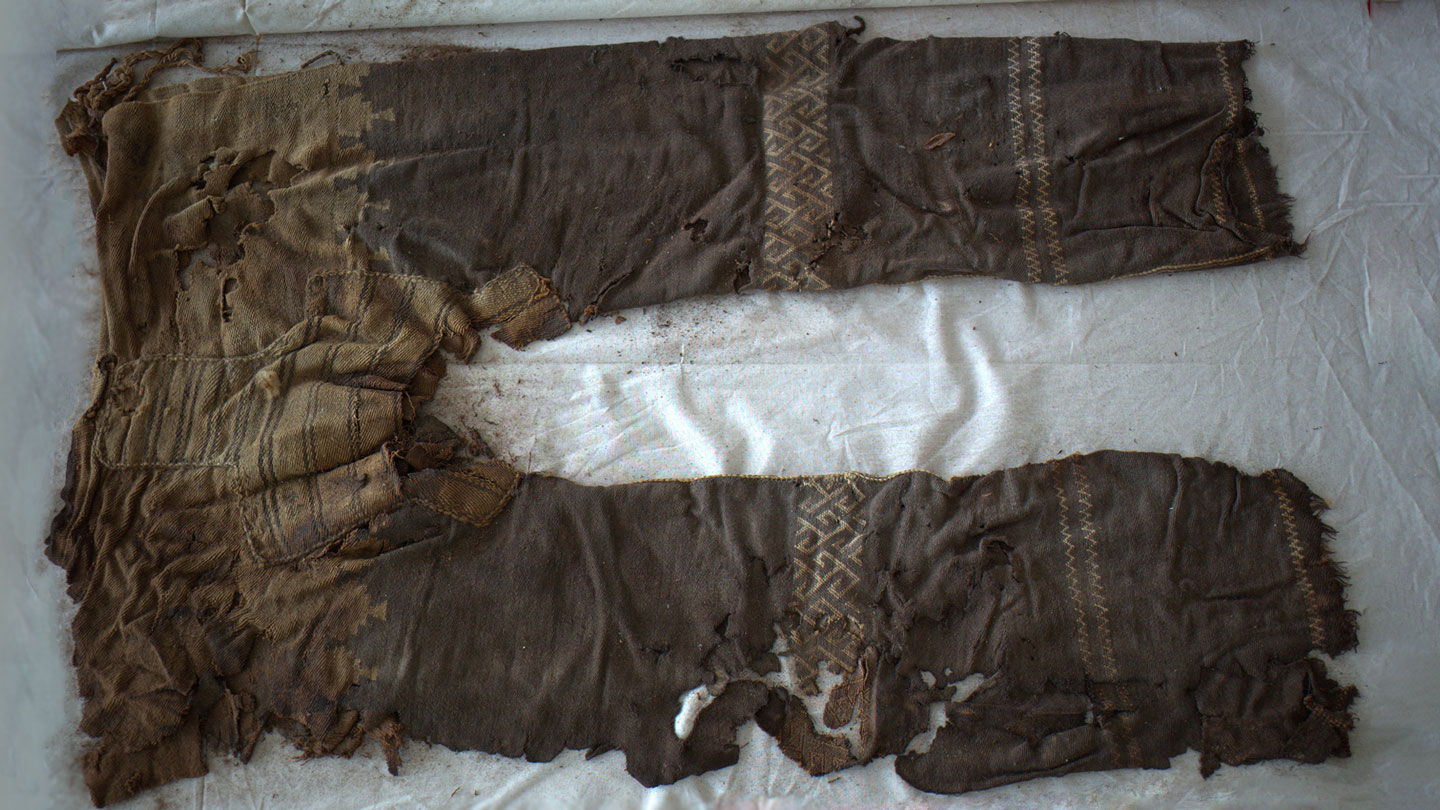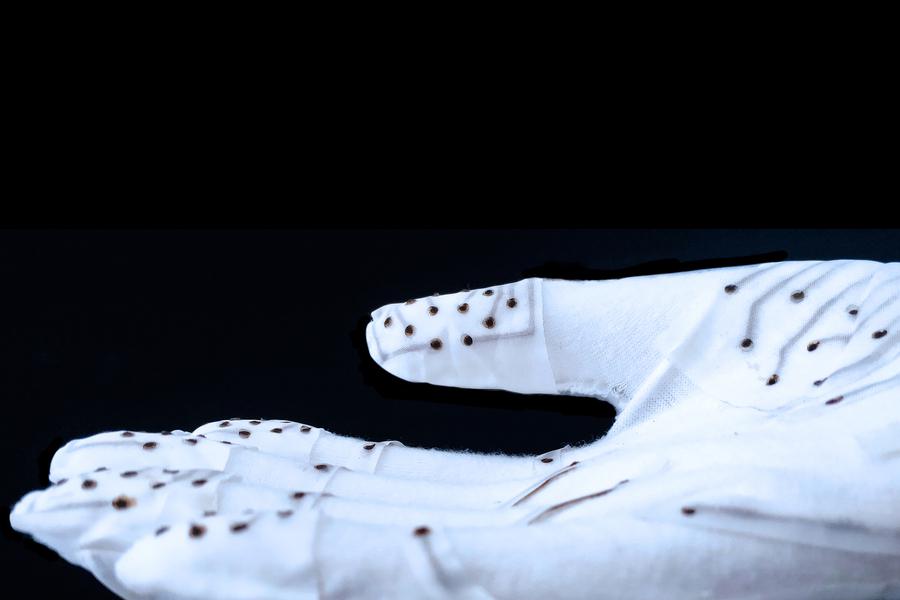New and smarter textiles race to the future of fashion

Image source: Rene Böhmer/Unsplash
- The clothing of the future will look nothing like what we wear today. Or maybe it will.
- A hunger for sustainability is leading researchers to new organic materials from which to design clothing.
- Other visionaries are working to make our future outfits as smart as we want to look.
One of the fun things about watching science fiction movies, especially old ones, is seeing filmmakers’ sometimes daffy predictions of what future clothing will look like. A lot of these prognostications envision traditional fabrics such as cotton or contemporary synthetic fibers cut into “future-y” designs. Recent advances make the real future of clothing look much more imaginative: While some are busy discovering more sustainable materials from which to fashion our clothes, other are dreaming up new things for our outfits to do.

Image source: freestocks.org/Unsplash
Nature knows best
About 60 percent of the clothing we wear contains plastic microfibers. The best-known are polyester, nylon, and acrylic. Unfortunately, these fibers don’t stay in our clothing. While some of them leach out as we go about our business, taking to the air and so on, doing laundry may be a significant contributor to the 8 million tons of microplastics dumped into our oceans annually. (Fun fact: Experts only know where about 1 percent of that plastic goes.) Nonetheless, research published in 2016 says that for an average wash load, over 700,000 fibers could be being released into the water supply.
In addition to ongoing efforts to find new ways of incorporating used materials in new clothing, textile-industry scientists are experimenting with a range of less environmentally damaging, more sustainable materials for us to wear. Much of it is derived from naturally occurring sources.
Pineapple fabric
Piñatex is a leather substitute made from pineapple-leaf fiber. These leaves are discarded during harvesting of the fruit, and so they’re readily available with no additional farming necessary, according to the Piñatex web site. The material, which is produced in sheets, is already being used for making shoes, handbags, and dresses.
Mushrooms
There are a few mushroom-thread-based fabrics.
There’s a synthetic leather called Mylo, from Bolt Threads, a vegan, eco-friendly material. The company’s partnering with fashion brands Stella McCartney and Patagonia in making actual clothing from Mylo.
Then there’s MycoTEX. The most startling thing about MycoTEX is that this living material can be grown into clothing. As producer Fungal Futures puts it, “the garment can be built three-dimensionally and shaped whilst being made, fitting the wearer’s wishes,” using clothing-shaped molds. Since MycoTEX grows into the desired shape without cutting, there’s no waste material when a garment’s complete.
Not-silk
One of the wildest ideas is another technology from Bolt Threads called “Microsilk.” Based on the way in which spiders produce real silk, Microsilk is derived from yeast-based proteins, extracted, and then spun into fibers. The company released, and immediately sold out of, a Microsilk tie in 2017, and Stella McCartney showed a gold dress made from the fibers at NYC’s MoMA that same year.
Eucalyptus yarn
A company called Wool and the Gang (a pun better read than said) is selling a product, “Tina Tape Yarn,” made from sustainably harvested eucalyptus trees. They call the material Tencel and claim it’s “more absorbent than cotton, softer than silk and cooler than linen.” It’s also biodegradable, made with renewable energy and — heads up, sheep — totally vegan.
Agraloop BioFibre
This company takes plant-based textiles beyond pineapples. We say that because pineapple leaves are just one of the castoff materials sourced to make their line of BioFibres. The others are oil-seed hemp, oil-seed flax, banana tree, cane bagasse, and rice straw. Agraloop notes that these six crops provide 250 million tons of textile fiber per year, 2.5 times the global demand.
Some of the rest
Other natural substances being reworked into clothing include chitin fiber from crustacean shells, seaweed, banana fiber, coconut fiber, and corn fiber.
Don’t forget to recharge your underwear
Technology in textiles is not a new thing, but it’s a booming field. Antimicrobial silver nanoparticles that prevent smelly bacteria — and therefore require less washing — have been embedded in fabrics since early in the new millennium. Researchers are working on water-repelling fabrics, and nanoparticles can also make clothing less flammable. Just this month, a nanoscale accelerometer was announced, perfect for incorporating into future motion-sensitive clothing.
What can clothes do? What can’t they do? Get ready for smart textiles.
Google goes beyond Glass
Having been early into smart wearables with their Glass products, Google has has begun weaving its Jacquard platform into clothing, in particular a jacket co-developed with Levi’s. The jacket is a wearable touch device you can use for controlling your devices.
Another smart-tech use being explored for fabrics are materials laced with sensors that can monitor the wearer’s health, going far beyond fitness watches to clothes that keep an eye on a wide range of health indicators.
Clothes that change color
Scientists from the College of Optics and Photonics at The University of Central Florida have developed ChroMorphous, a color-changing fabric your can control using your smartphone. They cal it “eFabric.” (What, does Apple own “iFabric?”)
Haptic fabric
Some of the new materials are designed to be helpful. Wearable X specializes in materials that support haptic feedback, electrical signals that mimic a sense of being touched or of interaction with virtual objects. The company currently sells NADI X yoga garb with embedded haptic feedback that provides training cues. An earlier product put the “fun” in Fundawear by allowing touch to be transmitted from a smartphone to a partner anywhere in the world, “created with long-distance couples in mind.”
Optical communicator hat
We’ll let Yoel Fink of MIT pitch this one: “Think about pedestrian safety and self-driving cars. Tremendous investments are going into cars. How about the pedestrians? Do we as pedestrians or bikers get to know if the car has detected us? With fabric optical communications your baseball cap can not only alert a car to your presence but importantly let you know if the car detected you. Fabrics for the self-driving future.” Alternately, those cars could just honk?
Look good, feel good
Obviously, any new materials designed for fashion need to be attractive, workable, and feel good to wearers in order to gain any traction, and these goals are very much elements in the development process. Will they be the comfy, loose-fitting fabrics of Star Wars, or will we be parading around in metallic armadillo-like facemasks? Who knows? Given our past track record, the odds are that we have no idea. We’ll just have to wait to see what we’ll look like when we control our personal universes from our intelligent pineapple jumpsuits.






